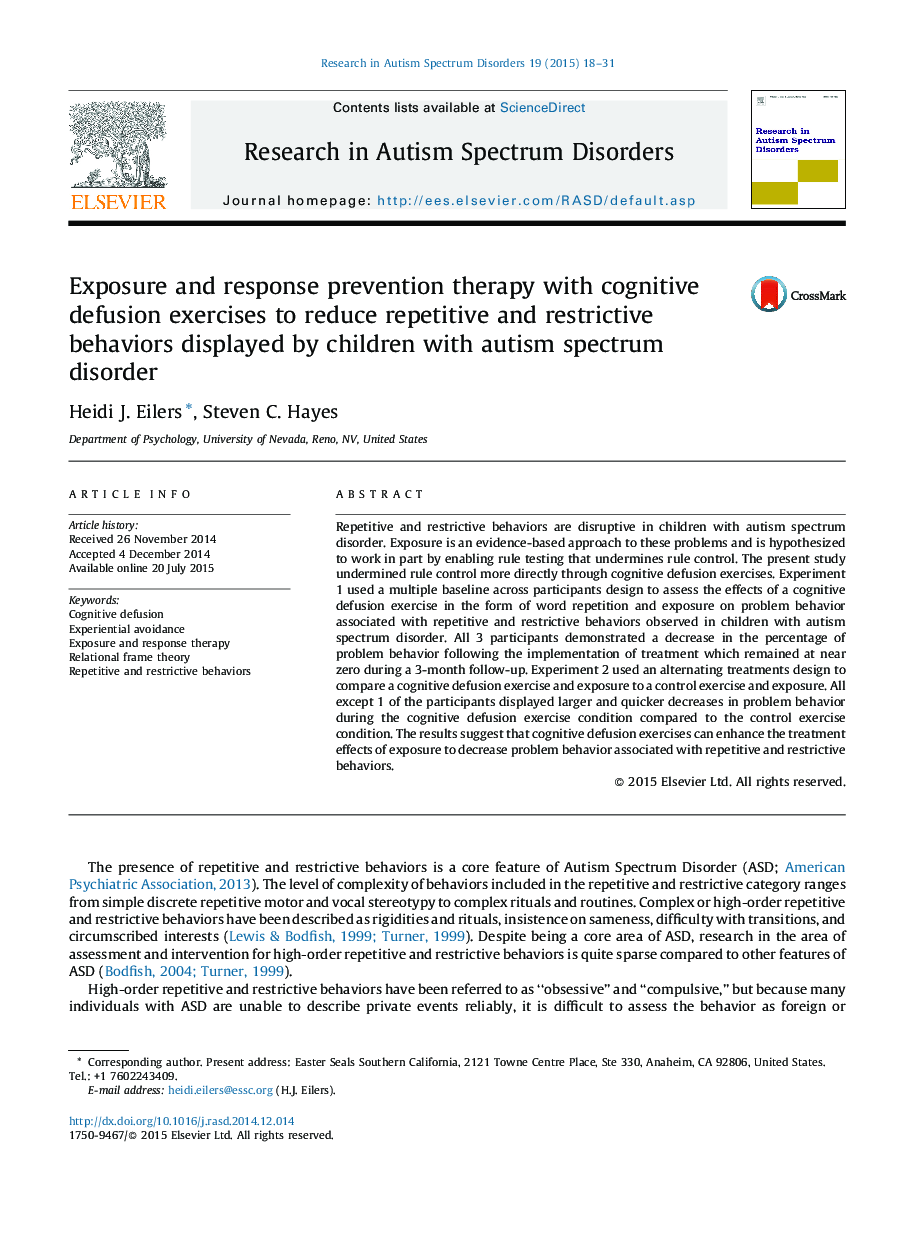| کد مقاله | کد نشریه | سال انتشار | مقاله انگلیسی | نسخه تمام متن |
|---|---|---|---|---|
| 370014 | 621835 | 2015 | 14 صفحه PDF | دانلود رایگان |
Repetitive and restrictive behaviors are disruptive in children with autism spectrum disorder. Exposure is an evidence-based approach to these problems and is hypothesized to work in part by enabling rule testing that undermines rule control. The present study undermined rule control more directly through cognitive defusion exercises. Experiment 1 used a multiple baseline across participants design to assess the effects of a cognitive defusion exercise in the form of word repetition and exposure on problem behavior associated with repetitive and restrictive behaviors observed in children with autism spectrum disorder. All 3 participants demonstrated a decrease in the percentage of problem behavior following the implementation of treatment which remained at near zero during a 3-month follow-up. Experiment 2 used an alternating treatments design to compare a cognitive defusion exercise and exposure to a control exercise and exposure. All except 1 of the participants displayed larger and quicker decreases in problem behavior during the cognitive defusion exercise condition compared to the control exercise condition. The results suggest that cognitive defusion exercises can enhance the treatment effects of exposure to decrease problem behavior associated with repetitive and restrictive behaviors.
Journal: Research in Autism Spectrum Disorders - Volume 19, November 2015, Pages 18–31
